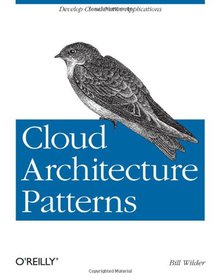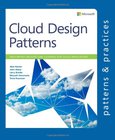Cloud Architecture Patterns
Using Microsoft Azure

Book Details:
| Publisher: | O'Reilly Media |
| Series: | OReilly , Using |
| Author: | Bill Wilder |
| Edition: | 1 |
| ISBN-10: | 1449319777 |
| ISBN-13: | 9781449319779 |
| Pages: | 182 |
| Published: | Oct 05 2012 |
| Posted: | Nov 19 2014 |
| Language: | English |
| Book format: | |
| Book size: | 5.32 MB |
Book Description:
If your team is investigating ways to design applications for the cloud, this concise book introduces 11 architecture patterns that can help you take advantage of cloud-platform services. You'll learn how each of these platform-agnostic patterns work, when they might be useful in the cloud, and what impact they'll have on your application architecture. You'll also see an example of each pattern applied to an application built with Windows Azure. The patterns are organized into four major topics, such as scalability and handling failure, and primer chapters provide background on each topic. With the information in this book, you'll be able to make informed decisions for designing effective cloud-native applications that maximize the value of cloud services, while also paying attention to user experience and operational efficiency. Learn about architectural patterns for: Scalability. Discover the advantages of horizontal scaling. Patterns covered include Horizontally Scaling Compute, Queue-Centric Workflow, and Auto-Scaling. Big data. Learn how to handle large amounts of data across a distributed system. Eventual consistency is explained, along with the MapReduce and Database Sharding patterns. Handling failure. Understand how multitenant cloud services and commodity hardware influence your applications. Patterns covered include Busy Signal and Node Failure. Distributed users. Learn how to overcome delays due to network latency when building applications for a geographically distributed user base. Patterns covered include Colocation, Valet Key, CDN, and Multi-Site Deployment.
Download Link:
Related Books:
Cloud Design Patterns
Prescriptive Architecture Guidance for Cloud Applications
Cloud applications have a unique set of characteristics. They run on commodity hardware, provide services to untrusted users, and deal with unpredictable workloads. These factors impose a range of problems that you, as a designer or developer, need to resolve. Your applications must be resilient so that they can recover from failures, secure to protect services from malicious attacks, and elastic in order to respond to an ever changing workload. This guide demonstrates design patterns that can help you to solve the problems you might encounter in many different areas of cloud application development. Each pattern discusses design considerations, and explains how you can implement it using the features of Windows Azure. The patterns are grouped into ...
Securing Cloud Services
A pragmatic guide to security architecture in the Cloud
Cloud services, such as SalesForce, Amazon Web Services and Microsoft Azure, offer enterprise grade computing power to businesses of all sizes, without them having to invest in the hardware, software and staff usually needed to support equivalent on-premise services. Cloud Computing represents a major change to the IT services landscape, but it also introduces a different set of potential security risks, which need to be understood and addressed. Securing Cloud Services - A pragmatic approach to security architecture in the Cloud goes beyond the subject of generic Cloud security and, instead, offers a more detailed, architectural approach to securing Cloud services. It describes how security architecture processes may be used to derive a set of secur...
Systems Architecture of Avalanche Prevention and Relief Cloud Applications and Services Iot System
General Systems Theory 2.0 at Work
A system is complex that it comprises multiple views such as strategy/version n, strategy/version n+1, concept, analysis, design, implementation, structure, behavior, and input/output data views. Accordingly, a system is defined as a set of interacting components forming an integrated whole of that system's multiple views. Since structure and behavior views are the two most prominent ones among multiple views, integrating the structure and behavior views is a method for integrating multiple views of a system. In other words, structure-behavior coalescence (SBC) results in the coalescence of multiple views. Therefore, it is concluded that the SBC architecture is so proper to model the multiple views of a system. In this book, we use the SBC architectu...
2007 - 2021 © eBooks-IT.org



